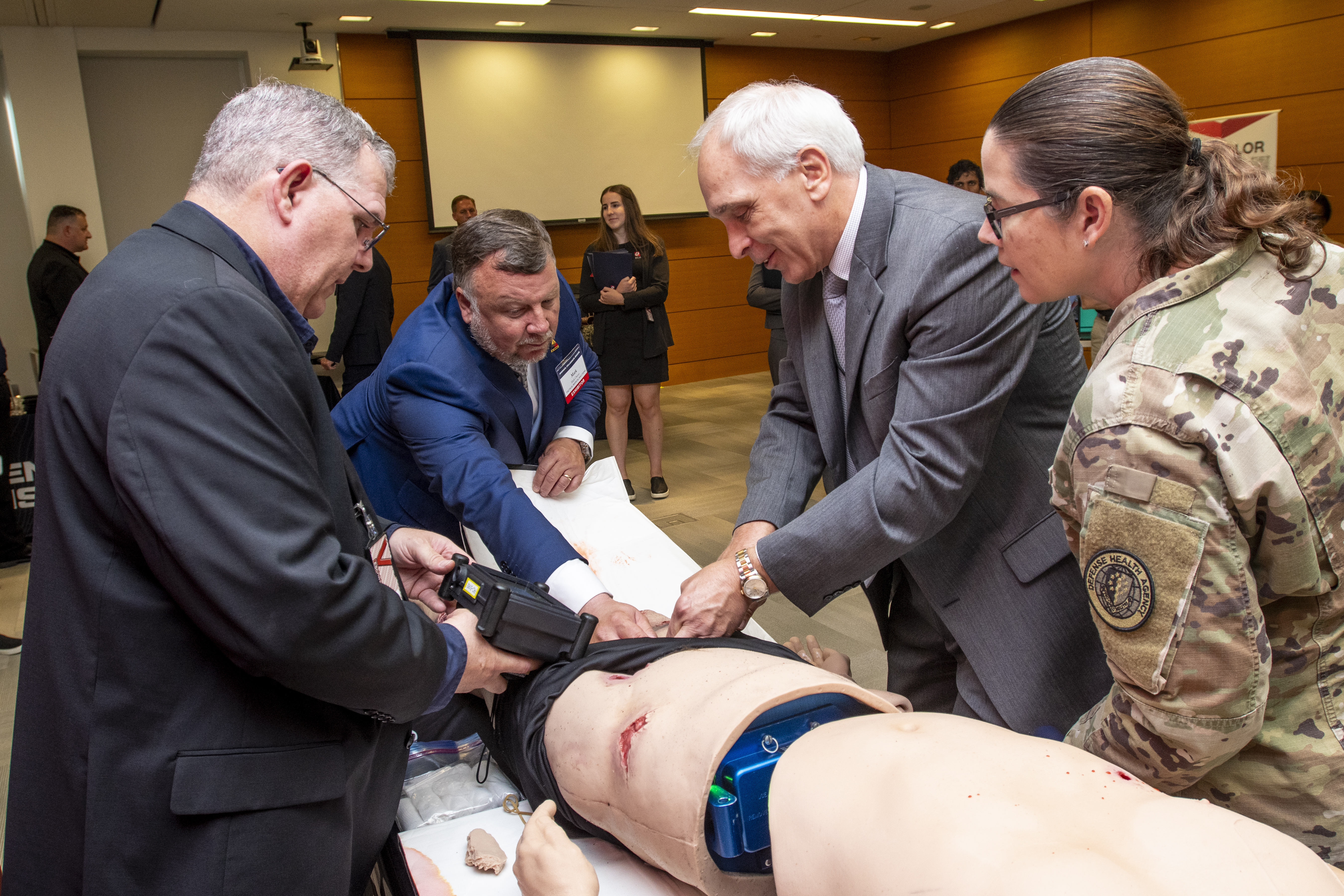The Defense Health Agency’s Medical Modernization and Simulation Division brought the latest in devices to its Medical Simulation Expo on Aug. 3, 2023, at DHA headquarters in Falls Church, Virginia.
“What I’ve seen today is the future,” said Donald Johnson, DHA’s assistant director of support and component acquisition executive. “Artificial intelligence, simulations, different technologies—I think this is where we have to go. We need to invest in it, we need to pilot it, and bring it to the classroom.”
The expo was open to all DHA and National Capital Region General Services Administration personnel to showcase the latest advancements in the field and collaborate with companies committed to making cutting-edge technologies for the Military Health System.
“This expo continues to be a great opportunity to connect industry partners, foster relationships, and collaborate on ideas,” said U.S. Army Col. Maria Molina, division chief of the MMSD. “We can identify education and training gaps and how we can mitigate those gaps with simulation. It helps us generate new ideas and get our community excited about simulation.”
More than 30 exhibiting companies presented live demos and hands-on training to attendees.
A guided tour for senior leaders kicked off the expo and featured industry personnel presenting technology solutions such as lifelike mannequins for medical training, and demonstrations including how to apply tourniquets, make scalpel cuts, insert needles, suture, and control bleeding. Virtual interactive video simulation for live training was presented, as well as secure wireless access points and platforms powered by artificial intelligence.
Ruben Garza, program deputy chief and administrator of the U.S. Air Force Medical Modeling and Simulation Training Program said, “It’s exciting to see the new technologies developing. When we started the expo, there were plastic mannequins that didn’t do too much. Now, you can take vitals from mannequins, they can talk to you, you can practice tourniquets, or do an IV. It’s been an evolution in how the new technology has increased to meet the mission.”
“I think the biggest change I saw from last year was AI,” said Molina. “Seeing what AI is doing to transform the way that we train our students is really big. We’re going see a huge shift in the next three to five years.”
Putting cutting-edge medical simulation technology in front of leaders was a primary motivation. “We want them to have more understanding of simulation,” said Garza.
“We talk about education, training, and medical simulation with our leaders,” said Molina. “We talk about why we need it, and its importance. But giving them the visual of new technology, what’s on the horizon, and what we can actually do with this technology helps a lot.”
According to Garza, using simulation technology to fill gaps is an important next step.
“How do we bring the training modalities to hospitals and clinics so they can get those repetitions, and movements?” said Garza.
For Garza, the expo was a step forward in the process of modernizing, standardizing, and centralizing medical simulation.
“We modernized to better fit the mission,” said Garza. “We standardized, so that if one facility can use it, another one can also use it. We also centralized … we can help a unit figure out what they need. That’s awesome. That’s the exciting part.”

